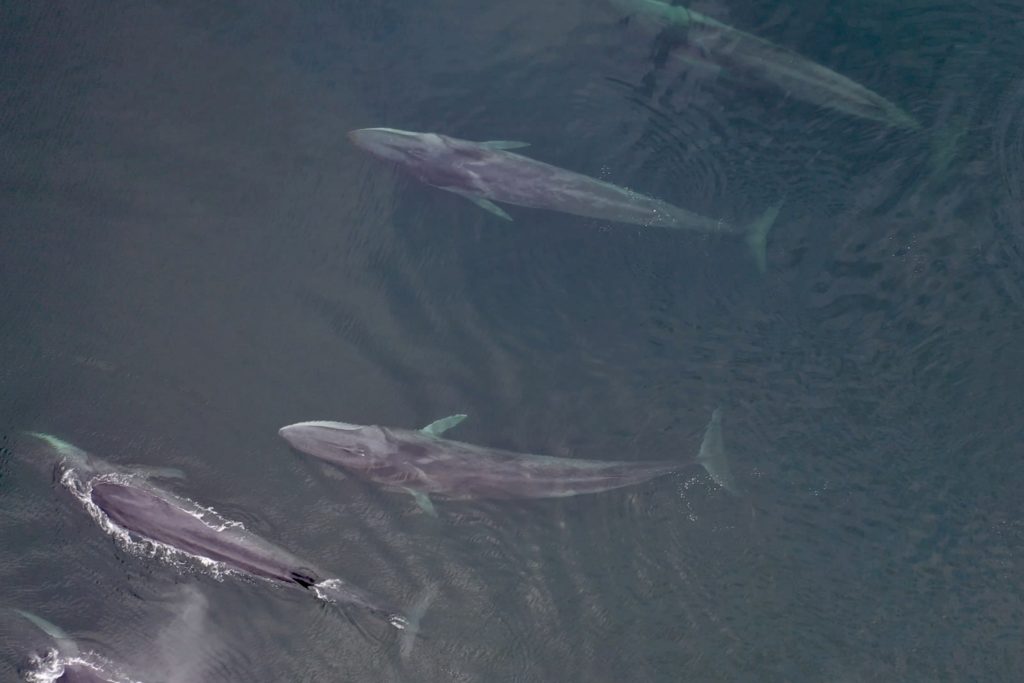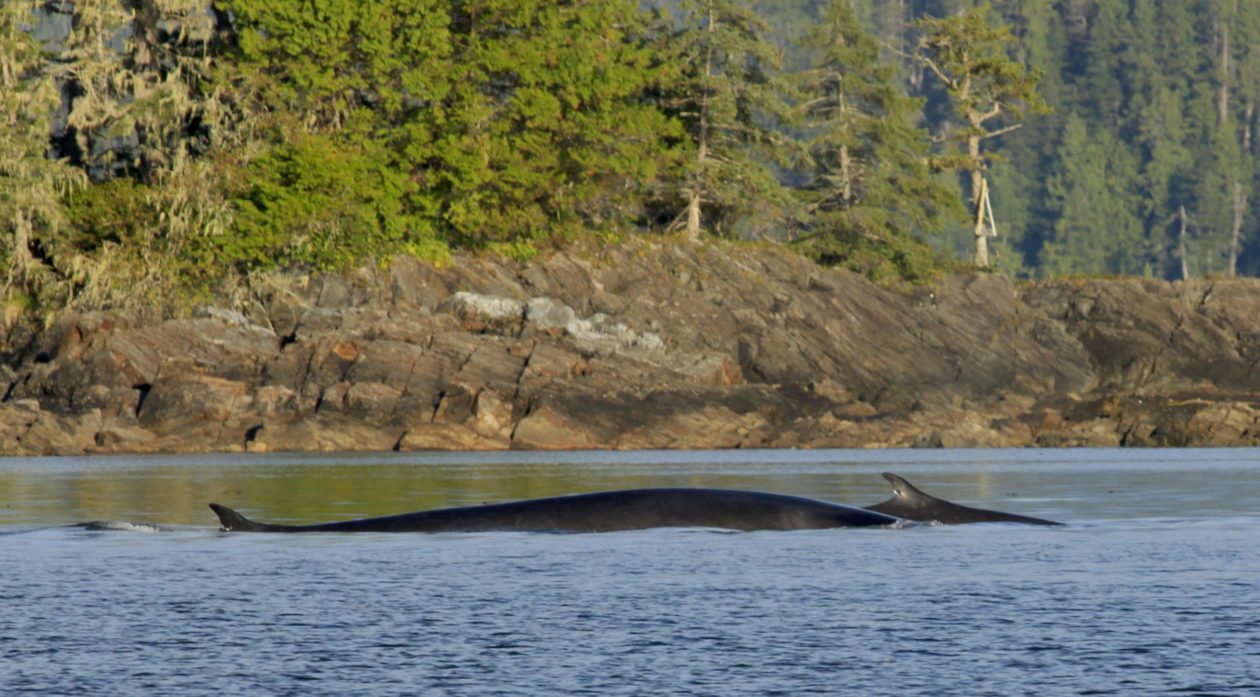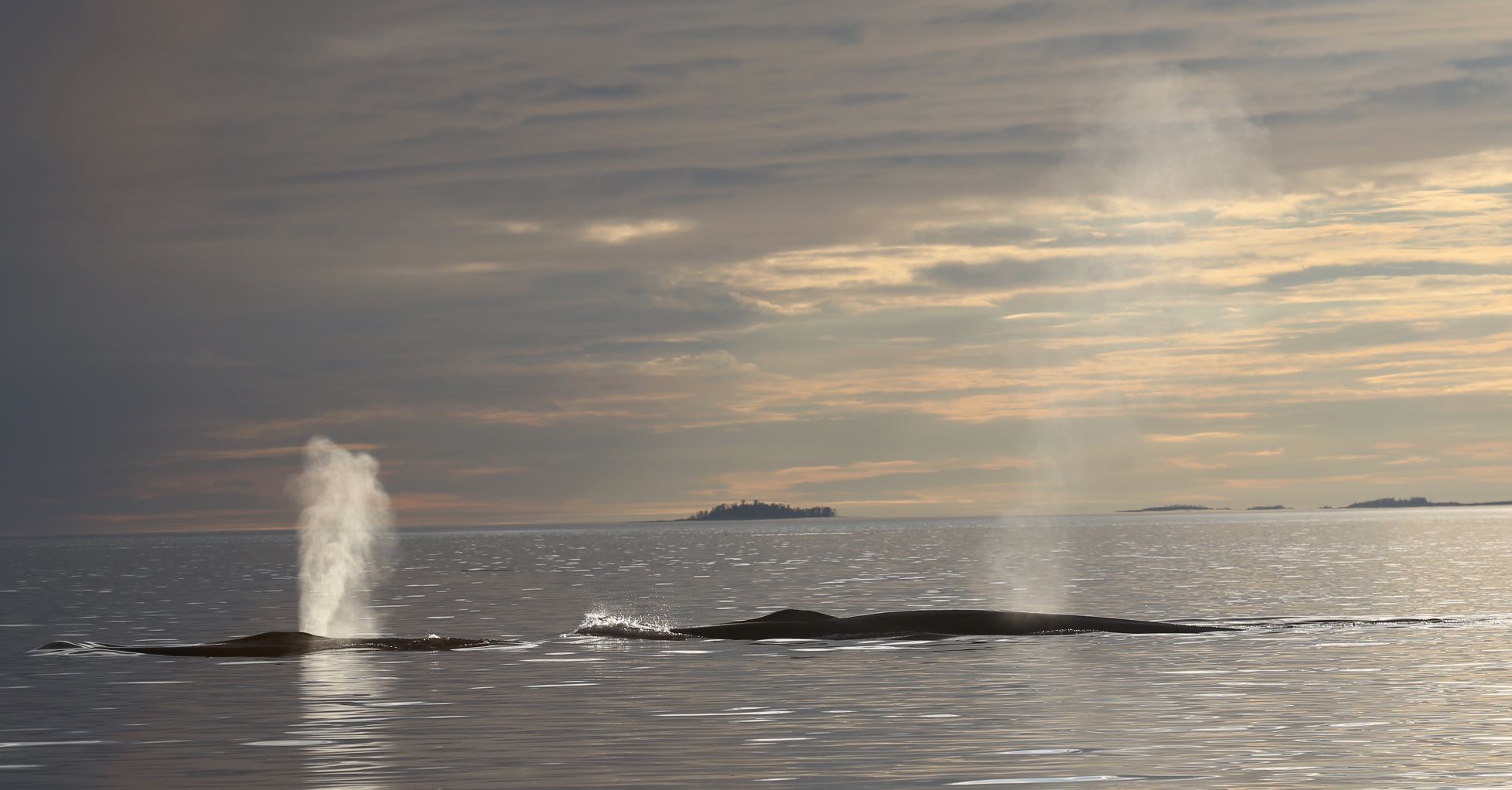Giant fin whales return to B.C. rainforest fjord — there’s just one problem
By SWAG Project
After decades of absence in the wake of whaling, the remote fjords of northern British Columbia are home again to the world’s second-largest whale.
Fin whales — the giants known for their speed, appetite and thunderous songs — can be found in offshore waters all over the world, but they rarely venture into coastal areas and almost never into confined inlets.
Never, that is, except for a single fjord in Canada’s Great Bear Rainforest.

“Finding fin whales in fjords like this is unique,” says Eric Keen, lead author of the recent PLoS ONE article announcing the discovery. “It’s special. Not just in British Columbia, but globally.”
This fin whale habitat is within Gitga’at First Nation territory and Gitga’at scientists led the 15-year study that culminated in the publication, collaborating with non-profit organizations, federal researchers, and academics like Keen along the way.
The most intriguing part of the discovery
But this “new” fin whale habitat is actually old. Multiple lines of evidence — from Gitga’at traditional knowledge to the catch records of whaling ships — indicate that the Great Bear is a place of unique historical importance for B.C.’s fin whales.
“Something about this place is special for fin whales,” says Chris Picard, co-author and science director of Gitga’at Oceans and Lands. “Our next priority is to understand why that is.”
For Janie Wray, co-author and founder of The North Coast Cetacean Society/BCWhales, the opportunity to observe fin whales in these protected waters is similarly special.
“This is the only place on earth where you can photo-identify fin whales from shore,” Wray says, “without disturbing them at all. It’s just magical.”
Wray and co-author Hermann Meuter, of the Pacific Whale Society, took the first photographs of fin whales in this area back in 2006. Ever since, they’ve been working with the Gitga’at to document the species’ return. By photographing the whales to track the behaviors of unique individuals, they discovered that the same whales were returning to Gitga’at waters each year. By 2019, their catalogue had grown to over 100 individuals, and the annual rate of return had climbed to over 95 per cent.
“We weren’t just seeing increasing numbers of fin whales,” Wray says, “we were seeing more and more of the same ones. They are forming a resident population.”
News of this fin whale population is exciting — but its timing is unfortunate
B.C.’s north coast has been staging itself for a massive increase in coastal shipping, primarily due to new LNG export projects. Much of this shipping will be routed directly through this newly discovered fin whale habitat. Currently one of the quietest places on the coast, this site is slated for a seven-fold increase in commercial shipping traffic by 2025.
Once the most numerous whale in the world, the fin whale was hunted in greater numbers than any other species and is now the species most often struck and killed by commercial ships. “And now the few remaining sanctuaries for this species, such as the Great Bear, are being industrialized one by one,” says Wray. “Fin whales just can’t catch a break.”
“Last century it was whaling ships that killed them and drove them out of Gitga’at waters,” Keen adds. “What if, this century, it is LNG?”

A second complication is that the fin whale’s federal protection may soon be removed, exposing B.C.’s fin whale habitats to less regulated development. (Downlisting was recommended based upon larger fin whale numbers observed hundreds of miles offshore.)
“But those whales far offshore aren’t the ones that need protection against shipping lanes, spills and coastal development, and that’s precisely what such protections are for. The Great Bear fin whales will be the ones to suffer,” Wray says.
The discovery of fin whales in the Great Bear is an important reminder that species recovery is more than just a matter of numbers. It will take decades to undo the damage caused by whaling, maybe even centuries.
“We need to keep Gitga’at waters safe for whales and safe for the community,” says Picard. “Now that the publication is out, the real work begins.”
For this group of researchers from First Nations as well as federal, non-profit and academic sectors, that means teamwork.
“This study demonstrates what can be learned when we come together and collaborate,” says Hussein Alidina, co-author and lead specialist of marine conservation at WWF-Canada. “Piecing together the fin whale’s story in this area took a lot of people, a lot of mutual trust, and two decades on the water.”
A initiative between the Gitga’at Nation, BCWhales and WWF-Canada called Ships, Whales & Acoustics in Gitga’at Territory (SWAG) seeks to bring relevant research to inform collaborative efforts with industry and regulators to reduce the risks that increased commercial shipping pose to recovering populations of whales in Gitga’at Territory. You can learn more about the SWAG project here.


